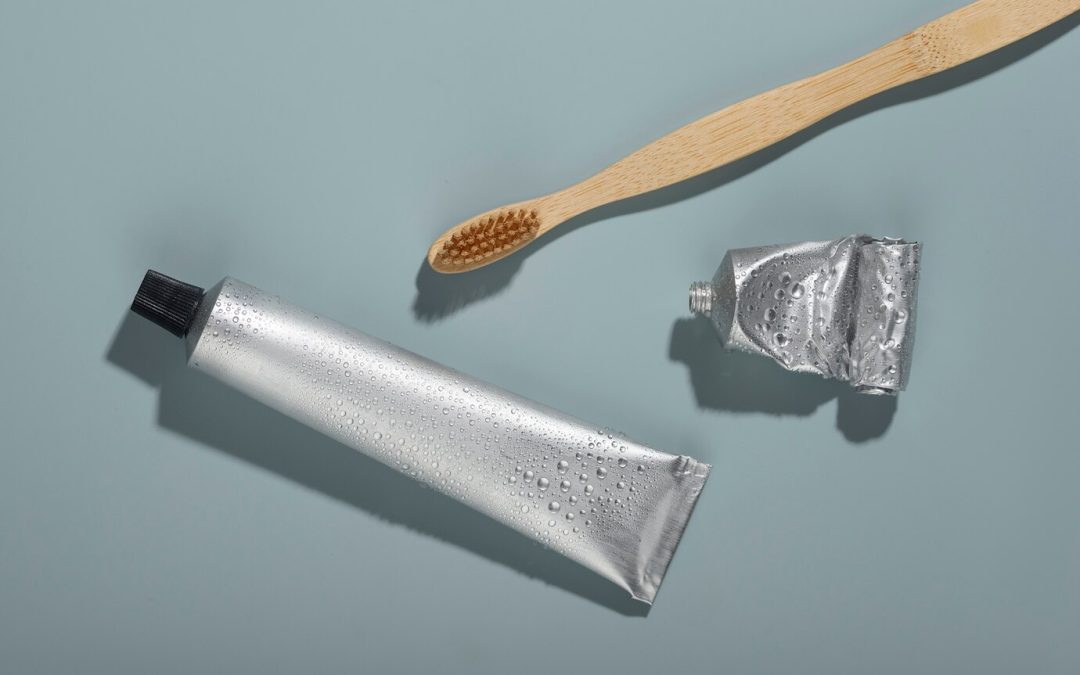Toothpaste is more than just a routine product in our daily lives—it’s an integral part of personal care and aesthetic presentation. Our smile, which reflects much about our personality, relies heavily on the cleanliness of our teeth, which can only be achieved through effective toothpaste. However, did you know that neglecting toothpaste not only affects your oral health but may also make you appear less concerned about yourself, negatively impacting others’ impressions of you? Thus, toothpaste is not merely a product but a key to self-confidence and an essential component of your daily routine for maintaining a healthy and attractive smile.
Have you ever wondered how silver nanoparticles could revolutionize oral care? As we search for new ways to combat tooth decay and maintain oral health, silver nanoparticles emerge as a unique, revolutionary solution due to their antibacterial properties. These particles, renowned for their exceptional germ-killing ability, are now making their way into toothpaste to offer superior protection and a bright smile. Silver nanoparticles have become more than just a precious element; they are now a crucial part of enhancing your oral health effectively and safely.
Importance of Using Toothpaste
While brushing and flossing are fundamental to oral health, using toothpaste adds an extra layer of protection and care necessary for maintaining strong, healthy teeth in the long run. It is an essential part of any oral hygiene routine, with several key benefits including:
- Prevention of Gum Diseases and Tooth Decay: Essential ingredients in toothpaste help maintain gum health and prevent tooth decay. Even with thorough brushing and flossing, toothpaste enhances this performance and protects against various damages.
- Elimination of Bad Breath: Toothpaste leaves your mouth and breath feeling fresh and pleasant after brushing, masking the strong odors from food and beverages that may cause bad breath.
- Treatment of Other Dental Issues: Many toothpastes contain additional components to address issues like sensitivity, whitening, and gum diseases, serving as the first line of defense against these problems.
- Reduction of Gum Inflammation and Tartar Buildup: Toothpaste plays a significant role in reducing gum inflammation and tartar buildup on teeth, with abrasive components helping to remove plaque and calculus.
Preparation and Characterization of Silver Nanoparticles Enhanced with Arabic Gum and Assessment of Their Antimicrobial Activity
In this study, silver nanoparticles (GA-AgNPs_0.4g) were synthesized using an efficient method involving Arabic gum as a stabilizer, enhancing the antimicrobial activity of these nanoparticles. The nanoparticles were prepared and characterized meticulously to evaluate their effectiveness in various applications.
Preparation of GA-AgNPs_0.4g
1. Preparation of Arabic Gum:
– Dissolved 1.6 grams of Arabic gum powder, sourced locally from North Kordofan, Sudan, in 100 ml of boiled deionized water.
– The solution was filtered using 0.45-micron filters.
2. Preparation of Silver Solution*:
– Added 4 grams of silver nitrate (AgNO₃) dissolved in 100 ml of water to the Arabic gum solution.
– Adjusted the volume to 400 ml using deionized water and mixed well.
3. Sterilization and Preparation of Nanoparticles*:
– Sterilized the solution at 120°C and 15 psi for 20 minutes.
– After sterilization, centrifuged GA-AgNPs_0.4g at 9000 rpm for 45 minutes, then re-dissolved in an equal amount of deionized water.
– Stored the solution at room temperature covered with foil until analysis.
Characterization of GA-AgNPs_0.4g
1. UV-Vis Spectroscopy:
– Conducted using a POLARstar Omega plate reader (BMG LABTECH, Offenburg, Germany).
2. Dynamic Light Scattering (DLS):
– Used a Malvern NanoZS90 Zetasizer (Malvern Panalytical Ltd, Enigma Business Park, UK) to determine particle size and distribution.
3. Transmission Electron Microscopy (TEM):
– Visualized particles using TecnaiF20 HRTEM electron microscope from FEI, Hillsboro, Oregon, USA, at the Electron Microscope Unit, University of Cape Town, South Africa.
4. Fourier Transform Infrared Spectroscopy (FTIR):
– Analyzed the chemical composition of the nanoparticles using a Perkin Elmer Spectrum Two FTIR at the School of Pharmacy, University of UWC (Waltham, Massachusetts, USA).
Preparation of GA-AgNPs_TP-1
1. Stock Preparation*:
– Mixed 5 ml of TP-1 slurry (at 62.5 µg/ml) with 5 ml of GA-AgNPs_0.4g (at 200 µg/ml).
– Stirred the mixture for 5 minutes to ensure homogeneity.
2. Preparation of Dilutions*:
– Maintained TP-1 concentration at 62.5 µg/ml and used in serial dilutions of GA-AgNPs_0.4g to produce concentrations ranging from 6.25 to 100 µg/ml.
– The final concentration of TP-1 in GA-AgNPs_TP-1 treatments was 31.3 µg/ml.
Evaluation of Antimicrobial Activity:
The antimicrobial activity of GA-AgNPs-TP will be assessed through a series of tests to determine its effectiveness in combating pathogenic microorganisms, providing insights into its potential to improve oral health.
Green Synthesis of Silver Nanoparticles in Toothpaste: A Look at Efficacy and Safety
Green synthesis of silver nanoparticles (AgNPs) is an eco-friendly and cost-effective option for combating antimicrobial resistance, especially in toothpaste applications. In an advanced study, silver nanoparticles synthesized using gum arabic (GA-AgNPs_0.4g) were integrated into a commercial toothpaste (TP) at an inactive concentration, demonstrating antimicrobial activity against oral microbes.
- Antimicrobial Activity:
– Integration of GA-AgNPs_0.4g with TP-1: The incorporation of GA-AgNPs_0.4g into TP-1 exhibited antimicrobial activity against oral microbes.
– The antimicrobial activity of GA-AgNPs_0.4g remained unchanged after integration with TP-1, maintaining its ability to inhibit microbial growth between 5 minutes and 24 hours of exposure.
- Cellular Toxicity:
Effect on BMF Cells: Despite its antimicrobial effectiveness, GA-AgNPs_0.4g-TP-1 and GA-AgNPs_0.4g demonstrated cytotoxicity to oral mucosal cells (BMF) at concentrations and time intervals that were lethal to microbes. However, this cytotoxicity might be acceptable given that toothpaste is used for short durations, not ingested, and rinsed off after a minute of use.
Safety can be enhanced by adding biopolymers such as chitosan and poly(ethylene glycol) before clinical application, as chitosan is particularly notable for its antimicrobial activities.
Neglecting proper brushing with toothpaste leads to plaque buildup on tooth surfaces, increasing bacteria that cause tooth decay and gum inflammation. Bacteria produce acids that attack and break down teeth, resulting in decay. Oral microbes causing dental caries and bacterial inflammation represent a serious health issue. Thus, this study aims to enhance the efficacy of commercial toothpastes in combating these microbes by demonstrating the antimicrobial effectiveness of gallic acid-coated silver nanoparticles (GA-AgNPs) against bacteria and fungi.



